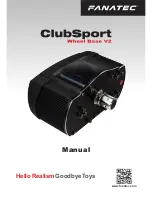
Page
38
P/N
06
‐
791
‐
4
(Rev.
4)
704
SW
10
th
Street,
P.O.
Box
610,
Blue
Springs,
Missouri
64013
‐
0610
U.S.A.
●
Phone:
(816)
229
‐
3405
●
www.fike.com
3.
DESIGN
This
section
details
the
steps
necessary
to
design
a
DuraQuench
water
mist
system
for
wet
pipe
operation.
It
is
the
responsibility
of
the
system
designer
to
ensure
that
the
DuraQuench
water
mist
system
is:
1.
Fully
designed
in
accordance
with
the
design
guidelines
of
this
manual
as
well
as
the
applicable
guidelines
and
requirements
of
FM
Global,
NFPA
750,
NFPA
13,
and
the
requirements
of
the
authorities
having
jurisdiction.
2.
Fully
documented
to
the
satisfaction
of
FM
Global
and
the
authorities
having
jurisdiction
(AHJ).
Design
shall
be
reviewed
and
accepted
by
the
authorities
having
jurisdiction
prior
to
the
installation.
3.
Applied
using
system
components
of
good
quality
and
reliable
products,
which
are
accepted
and
approved
by
FM
Global
and
the
AHJ,
and
that
are
suitable
for
their
particular
use
in
the
system.
See
Section
2.1.
4.
Designed
to
fully
match
the
location
and
application
to
be
fire
protected.
5.
Hydraulically
designed
from
water
supply
to
water
mist
nozzles.
The
hydraulic
design
shall
ensure
that
minimum
requirements
of
water
flow
and
water
pressure
on
all
nozzles
meets
the
design
criteria
and
is
available
when
the
system
is
active.
6.
Provided
with
all
system
parts
and
spares
necessary
for
commissioning.
7.
Provided
with
clear
instructions
of
how
to
set
the
system
back
to
service
after
activation.
8.
Provided
with
a
schedule
with
instructions
for
testing
the
system.
The
basic
design
principals
of
the
DuraQuench
wet
pipe
water
mist
system
are
identical
to
that
of
traditional
sprinkler
wet
pipe
systems.
3.1.
Design
Documentation
System
documentation
for
the
DuraQuench
deluge
water
mist
system
shall
be
prepared
and
submitted
in
accordance
with
the
requirements
of
NFPA
750,
Standard
on
Water
Mist
Fire
Protection
Systems
and
FM
Property
Loss
Datasheet
4
‐
2,
and
should
include:
1.
List
of
all
relevant
system
documents.
2.
Hydraulic
calculation
of
the
whole
wet
pipe
system.
3.
Hydraulic
system
diagram
or
drawing,
with
pipe
sizes
and
all
system
components.
4.
Electrical
diagram
with
full
detection
and
alarm
circuits,
with
power
supplies
and
system
components.
5.
Full
list
of
component
suppliers,
with
component
manufacturers
and
names
and
series
numbers
etc.,
on
components
applied
to
the
system.
6.
Full
index
list
on
manufactures
data
‐
sheets
on
system
components.
7.
Description
and
checklist
for
all
system
components.
8.
Full
system
description,
and
service
descriptions
and
spares
lists
on
all
system
components.
9.
Installation
guidelines
for
the
installer
and
for
service
engineers
and
authorities
inspecting
and
commissioning
the
system.
10.
Service
guidelines
and
system
test
guidelines.
11.
How
to
set
system
in
service.
12.
List
of
spares
at
commissioning,
and
spares
on
site.
13.
List
of
system
approvals
14.
System
log
Summary of Contents for DuraQuench
Page 93: ......
















































